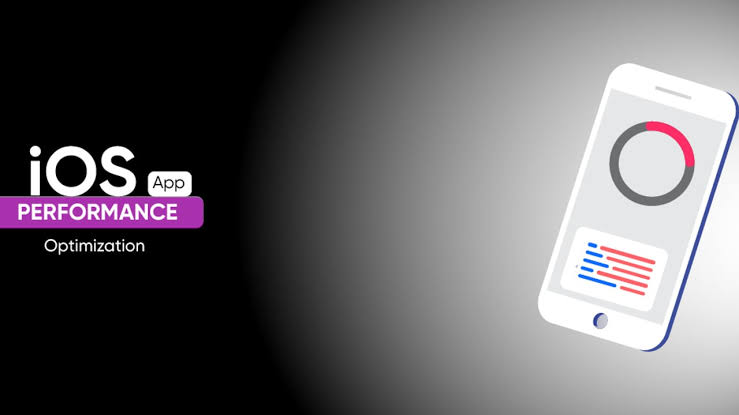In the competitive world of mobile applications, performance is one of the most critical factors for success. Users expect apps to be fast, responsive, and efficient, and even minor lags can lead to poor reviews or app abandonment. For businesses and developers, optimizing iOS app performance isn’t just a technical challenge—it’s a necessity for user retention and satisfaction. This blog will explore essential tips and hacks to ensure your iOS app delivers a seamless experience.
Why Performance Optimization Matters
Performance is central to an app’s success. According to industry studies, users are likely to uninstall an app if it freezes, crashes, or consumes excessive resources. Poor performance can hurt your app’s ratings on the App Store, lowering its discoverability. If you’re an iOS app development company or an individual developer, ensuring top-notch performance is integral to maintaining a competitive edge.
Here are some key areas of focus for optimizing iOS app performance:
1. Efficient Code Practices
Writing clean, efficient code is the cornerstone of app performance. Here’s how you can achieve this:
- Minimize Unnecessary Computations: Avoid redundant calculations and use caching where applicable to reduce runtime overhead.
- Optimize Algorithms: Choose the right algorithms and data structures to minimize complexity and improve processing speed.
- Use Lazy Loading: Load content only when needed, especially for large datasets like images or videos.
Leveraging efficient code helps reduce processing time and ensures smoother app functionality.
2. Optimize App Startup Time
The first impression matters, and long startup times can drive users away. Follow these strategies:
- Defer Initialization: Only initialize essential services during app launch. Postpone loading non-critical components until after the app is running.
- Reduce Dependencies: Eliminate unnecessary libraries and frameworks to streamline the app’s load time.
- Profile Launch Time: Use Xcode’s Instruments tool to measure startup performance and identify bottlenecks.
Faster startups not only improve user experience but also contribute to higher App Store ratings.
3. Memory Management
Efficient memory management is crucial for preventing app crashes and ensuring smooth performance. Consider the following:
- Use ARC (Automatic Reference Counting): Let ARC manage memory efficiently by automatically releasing unused objects.
- Avoid Retain Cycles: Use weak references where needed to prevent memory leaks caused by circular dependencies.
- Optimize Image Assets: Compress images and use appropriate file formats to reduce memory usage.
By minimizing memory consumption, you can create an app that’s both stable and efficient.
4. Networking Efficiency
Networking is often a performance bottleneck. Optimize your app’s network interactions with these hacks:
- Use Background Tasks: Perform network requests in the background to avoid blocking the main thread.
- Implement Caching: Cache frequently accessed data locally to minimize redundant network calls.
- Optimize Payloads: Use lightweight formats like JSON and compress data to reduce network load.
For apps that rely heavily on real-time data, optimizing network performance can make a significant difference.
5. UI Optimization
The user interface is where performance issues become most apparent. Ensure your UI is fluid and responsive:
- Use Core Animation: Leverage Core Animation to create smooth and efficient animations.
- Avoid Overdraws: Reduce overlapping UI elements to minimize rendering overhead.
- Asynchronous Rendering: Perform complex rendering tasks off the main thread to keep the UI responsive.
A polished UI is a hallmark of a well-optimized iOS app and is vital for user satisfaction.
6. Energy Efficiency
Battery consumption is a common user complaint. Implement these strategies to make your app more energy-efficient:
- Reduce Background Activity: Limit unnecessary background tasks to conserve battery life.
- Optimize Location Services: Use location updates sparingly and switch to less energy-intensive methods like geofencing.
- Minimize Wake Locks: Avoid frequent wake-ups and group tasks to reduce energy usage.
An energy-efficient app is more likely to remain installed on users’ devices.
7. Testing and Monitoring
Optimization doesn’t end with development. Regular testing and monitoring are crucial:
- Use Instruments: Xcode’s Instruments provides tools to profile your app’s performance, including memory usage, CPU load, and network activity.
- Test on Real Devices: Simulators are helpful but may not reveal all performance issues. Test on a variety of physical devices to ensure a smooth experience across different models.
- Monitor Crash Logs: Use tools like Firebase Crashlytics to track and analyze app crashes.
Proactive testing ensures your app maintains high performance after deployment.
Tools to Assist in Optimization
The iOS ecosystem offers several tools to assist developers:
- Xcode Instruments: For profiling and debugging.
- SwiftLint: To enforce coding standards and improve code quality.
- Alamofire: A popular networking library that simplifies API interactions.
Utilizing these tools can save time and improve your app’s overall quality.
Collaborating with Experts
If you lack the resources or expertise to optimize your app, consider working with professionals. An experienced iOS app development company can provide tailored solutions to enhance your app’s performance. Additionally, if you’re looking for skilled individuals, there are plenty of iOS app developers for hire who specialize in performance optimization. Collaborating with experts ensures your app meets the highest standards.
Conclusion
Optimizing iOS app performance is an ongoing process that requires attention to detail and a commitment to excellence. By following these speed and efficiency hacks, you can create an app that not only meets user expectations but also outshines competitors. Whether you’re an individual developer or part of an iOS app development company, prioritizing performance will pay dividends in user satisfaction and long-term success. If you’re searching for iOS app developers for hire, make sure they share your vision for delivering high-performing, user-centric applications.
Stay ahead in the competitive app landscape by making performance optimization a cornerstone of your development process.



